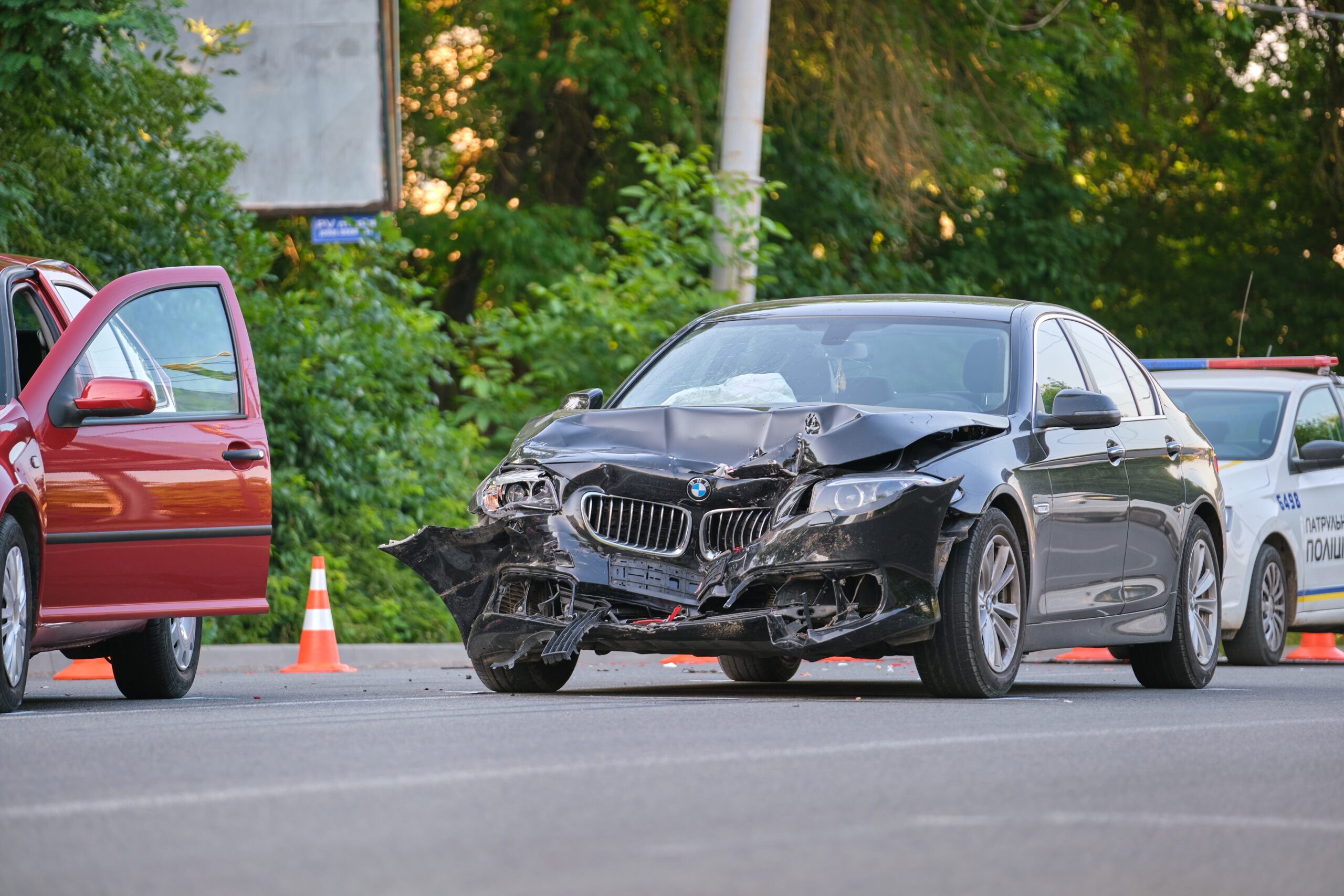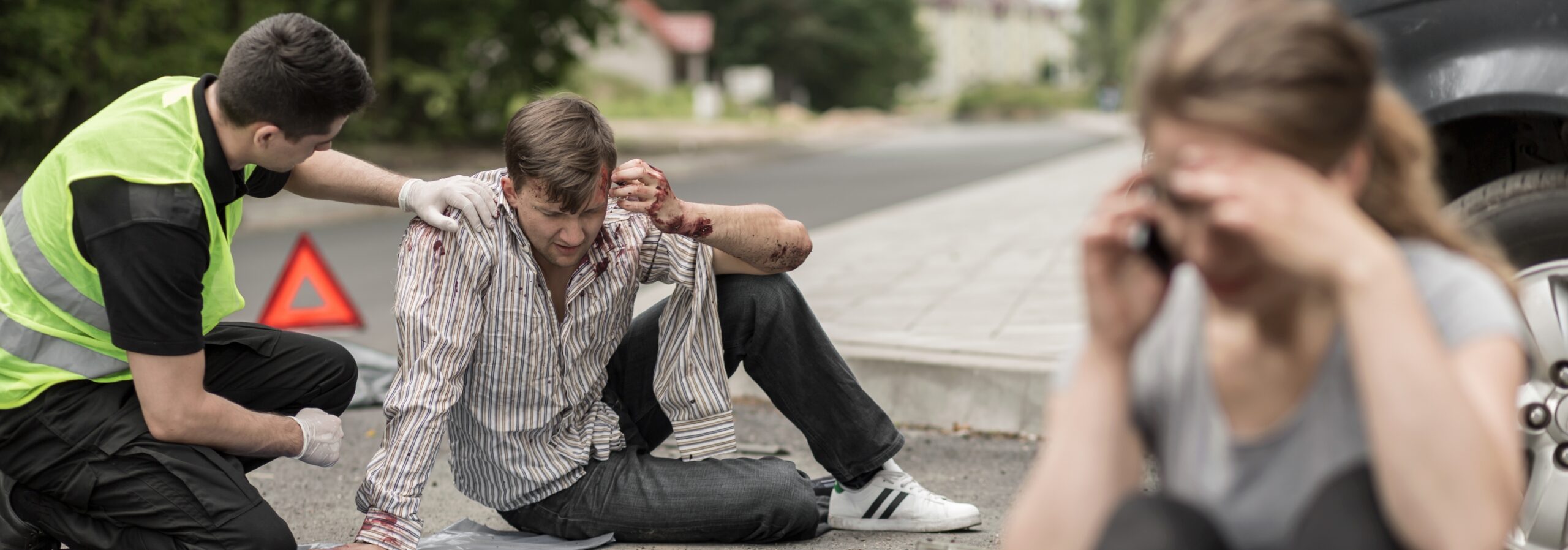Staten Island is the least populated of New York City’s five boroughs, but it is a vibrant hub of activity with a complicated network of roads and highways.
Like any other bustling area, it is also, unfortunately, a stage for car accidents, including single-vehicle accidents, multi-vehicle crashes, and crashes involving vulnerable road users, such as bicyclists and pedestrians.
Understanding where these accidents usually occur can prevent future occurrences. The development of street plans, common-sense traffic laws, and steady enforcement are also key to preventing car crashes. If you or your loved one suffered injuries in car accidents you can contact a car accident attorney in Staten Island to get fair compensation for your damages.
Statistics on Car Accidents in Staten Island

Car accidents in Staten Island, while less frequent than in other boroughs, remain a significant concern. According to data from Safe Roads USA, 16,931 motor vehicle accidents occurred in New York City’s boroughs in one year.
Hundreds of accidents occur in Staten Island every month, including:
- Rear-end accidents, in which the front of one vehicle collides with the rear of another.
- Head-on collisions, where two vehicles traveling in opposite directions collide.
- Sideswipe accidents, in which the side of one vehicle collides with the side of another.
- Broadside (T-bone) accidents, where the front of one vehicle collides with the side of another.
Staten Island and New York City’s other boroughs have some of the most-used roads in the world, and fast-moving vehicles drive close to bicycles and pedestrians. Many of the city’s fatalities involve vulnerable road users.
Common Locations for Car Accidents in Staten Island
Car accidents in Staten Island tend to occur in certain hotspots. Major highways, such as the Staten Island Expressway, Hylan Boulevard, and Richmond Avenue, are often the scene of collisions due to their high volume of traffic.
Residential areas, especially those lacking traffic lights and visible stop signs, also see numerous accidents, along with commercial areas with high pedestrian traffic, such as shopping centers and business districts. Car accidents around school zones, while less frequent, constitute a significant safety concern.
According to statistics that the New York City Police Department (NYPD) provided, some of the intersections in Staten Island that see multiple accidents a year include:
- Clove Road and Victory Boulevard.
- Fingerboard Road and Tompkins Avenue.
- Monroe Avenue and Victory Boulevard.
- Forest Avenue and South Avenue.
- Gannon Avenue and Willowbrook Road.
- 10th Street and Tysens Lane.
- Baltic Avenue and Richmond Road.
- Burgher Avenue and Hylan Boulevard.
- Jefferson Avenue and Richmond Road.
- Manor Road and Rockland Avenue.
- Charlotte Road and West Shore Expressway.
NYPD also notes that accidents are common on the Verrazzano-Narrows Bridge.
Causes of Car Accidents in These Locations
Several factors contribute to car accidents in Staten Island. NYPD reports that distracted driving is the most common (but certainly not the only) cause.
Distracted Driving
When people hear the term distracted driving, they usually think of drivers who are texting or talking on their cell phones. While cell phone use is a major distraction, other common activities can also lead to distracted driving accidents.
As the National Highway Traffic Safety Administration (NHTSA) explains, these common activities include tending to pets or children in the backseat, fiddling with the stereo, eating, drinking, or anything else that takes the driver’s focus off driving safely.
Alcohol Impairment
Drunk driving, especially during holidays and weekends, is another major cause. As an SILive report notes, following the COVID-19 pandemic, Staten Island locals turned to the restaurants and bars in the area to up their entertainment game and keep patrons close to home.
While this has resulted in an economic boost for local businesses and provided more options for those wanting a night on the town, it could increase the risk of people operating their vehicles on Staten Island roads after drinking too much.
Speeding
Speeding and violating traffic signs often lead to accidents in residential and commercial areas. According to NYPD, of the 392 accidents that occurred in Staten Island, 160 resulted in injuries and fatalities, and 20 of those were the result of a vehicle traveling at an unsafe speed.
A speeding vehicle poses several risks, including the driver not having time to react to a hazard on the road, not having enough space for the brakes to pull the vehicle to a complete stop before an accident occurs, and increased crash severity.
Lane Violations
Lane violations are also a common cause of accidents in Staten Island. Violations that can lead to an accident include a driver failing to signal when they intend to change lanes or turn, neglecting to check their blind spot before changing lanes or merging, or passing in the right lane or where prohibited.
Tailgating
Following another vehicle too closely accounts for many car accidents in Staten Island. If a driver does not pace their speed to create a safe space between their front bumper and the back bumper of the car ahead of them, it can result in a rear-end accident. If the driver of the lead vehicle suddenly slows down, the driver of the following vehicle often does not have the time or space to avoid hitting the other vehicle.
Other Common Factors in Staten Island Accidents

Weather conditions, such as fog, rain, or snow, can also cause accidents, though they are rarely the only cause. Many accidents are the result of wet or icy roads in combination with a driver failing to properly maintain their vehicle or traveling too fast. Poor road conditions, including potholes or inadequate signage, can also contribute to the problem.
Time Patterns of Car Accidents in Staten Island
The timing of accidents in Staten Island follows a specific pattern. Rush hours are peak times for accidents, particularly from 7 a.m. to 9 a.m. and from 4 p.m. to 7 p.m. Weekdays typically see more accidents than weekends, which is attributable to the increased work-related commuting. According to seasonality, winter tends to witness more accidents due to icy and snowy road conditions.
Consequences of Car Accidents in Staten Island
Car accidents in Staten Island have wide-reaching effects. They disrupt the normal flow of traffic, especially on major highways, leading to costly delays. Economically, they burden the healthcare and court systems and insurance companies with substantial costs and result in lost productivity for businesses in the area. From a public health perspective, car accidents lead to injuries, disabilities, and even fatalities.
According to a study by QuoteWizard, New York has the third-highest cost in the nation for hospitalization, at an average of more than $3,700 per day. People who suffer injuries due to accidents in Staten Island often incur additional costs when obtaining treatment for their injuries, such as the cost of diagnostic imaging, prescription medication, and physical therapy.
Car accident victims commonly incur other types of costs, including lost earnings during their recovery or even a permanent loss of earning capacity as a result of disabling injuries. They also have to pay to repair or replace their vehicle.
Not all costs associated with car accidents are monetary. Those who have suffered injuries often have to deal with changes to their relationships with family and friends, chronic physical pain, and loss of the ability to participate in activities and events they find enjoyable.
Safety Measures To Prevent Car Accidents
Traffic laws and regulations can significantly decrease the risk of car accidents if road users observe them diligently. Simple safe driving tips, such as avoiding distractions, not driving under the influence, and adhering to speed limits, can help. Law enforcement plays a crucial role in maintaining road safety, and community initiatives like awareness campaigns can also help to reduce accidents.
Since 2014, relevant agencies from all of New York City’s boroughs have addressed traffic laws and regulations, safe driving tips, law enforcement efforts, and community awareness campaigns through their Vision Zero plan.
This plan included a $900 million investment from the city over five years to advance the goals of the city’s street plan. Part of this plan includes redesigning 1,000 area intersections to make them safer and seeking control from the state for New York City to manage its automated traffic enforcement and set its speed limits.
New York’s street plan emphasizes providing safe routes for vulnerable road users, including bicyclists and pedestrians. One of its annual awareness campaigns helps motorists understand the risks that vulnerable road users face, particularly in the fall and winter, when they often walk or ride home from work in the dark.
What to Do After an Injury in a Staten Island Car Accident
When it comes to car accidents, New York is a no-fault state. This does not mean that no one is at fault for causing a car accident, it means that drivers must obtain a personal injury protection (PIP) insurance policy to register their vehicles in the state. The PIP policy provides coverage of medical expenses and lost earnings following a car accident, regardless of who is at fault.
If the claimant’s injury-related expenses exceed the limit of a PIP policy they or someone in their household has or if their injuries are severe and permanent and someone else was liable for the accident, New York’s laws allow them to file a personal injury claim against the at-fault party’s auto liability insurance coverage.
Once the injured party files a personal injury claim, the insurance company will assign a claims adjuster to evaluate the case and determine whether the insured was liable for the accident. If so, the claims adjuster will determine how much the insurance company must pay. They can then pay the claim, deny the claim, or offer to settle the claim out of court.
If the claims adjuster fails to fairly compensate the claim by paying it outright or engaging the claimant in a settlement agreement, the injured party can file a personal injury lawsuit.
Staten Island claimants generally have three years from the date of the accident to file a lawsuit in court; this is the statute of limitations, and meeting this deadline is necessary for the claimant to receive compensation. Allowing the statute of limitations to expire will usually mean a court will not hear the case and there is no longer a legal obligation for the insurance company to resolve the matter.

Car Accident Lawyer, Andrew Finkelstein
Why Do You Need a Car Accident Attorney?
While some may view hiring an attorney as a convenient option after a car accident, personal injury lawyers play a key role in the claimant’s ability to obtain the compensation they need. When handling personal injury claims, attorneys can gather evidence, evaluate the claim, negotiate with the claims adjuster, and even represent you in court, if necessary.
When an injured person is deciding whether to hire an attorney, they may worry about cost—but they shouldn’t.
Most Staten Island personal injury lawyers work on a contingent fee basis, so the money they receive for handling the case is contingent on their ability to reach a positive outcome for their client. If the client does not receive compensation, neither does the attorney. If the client receives compensation through a settlement or verdict, a percentage of the overall compensatory award pays the attorney’s fees.
Information Is Important in Reducing Staten Island Car Accidents
Understanding the key factors in Staten Island car crashes, such as common locations, underlying causes, timing, and the effects of car collisions, can pave the way for effective prevention strategies. All road users must observe traffic rules and engage in responsible driving practices. Doing so will protect their lives and help make Staten Island a safer place for all.
